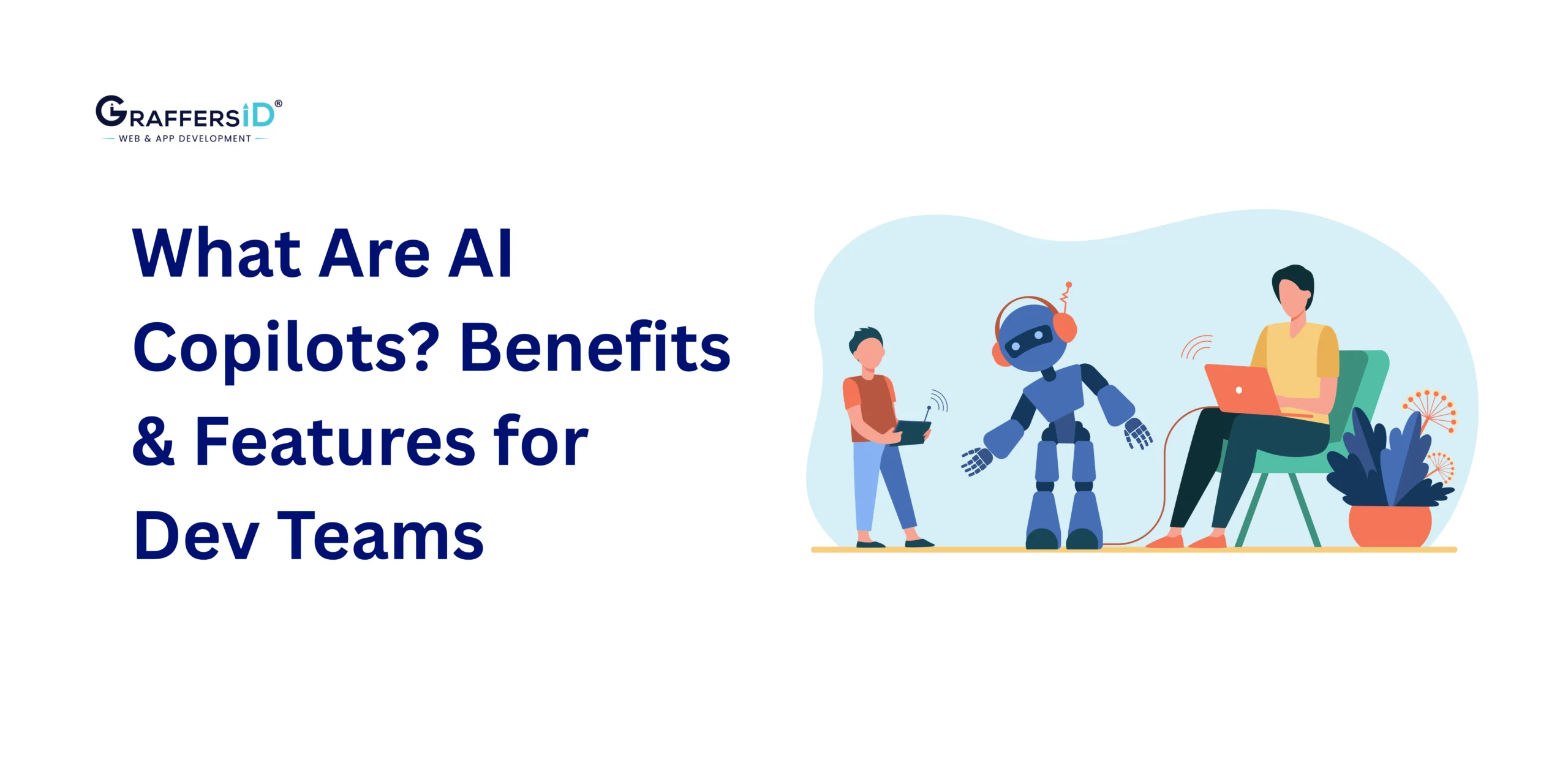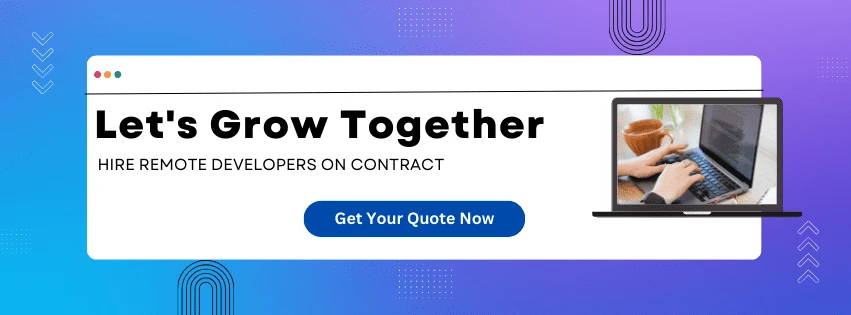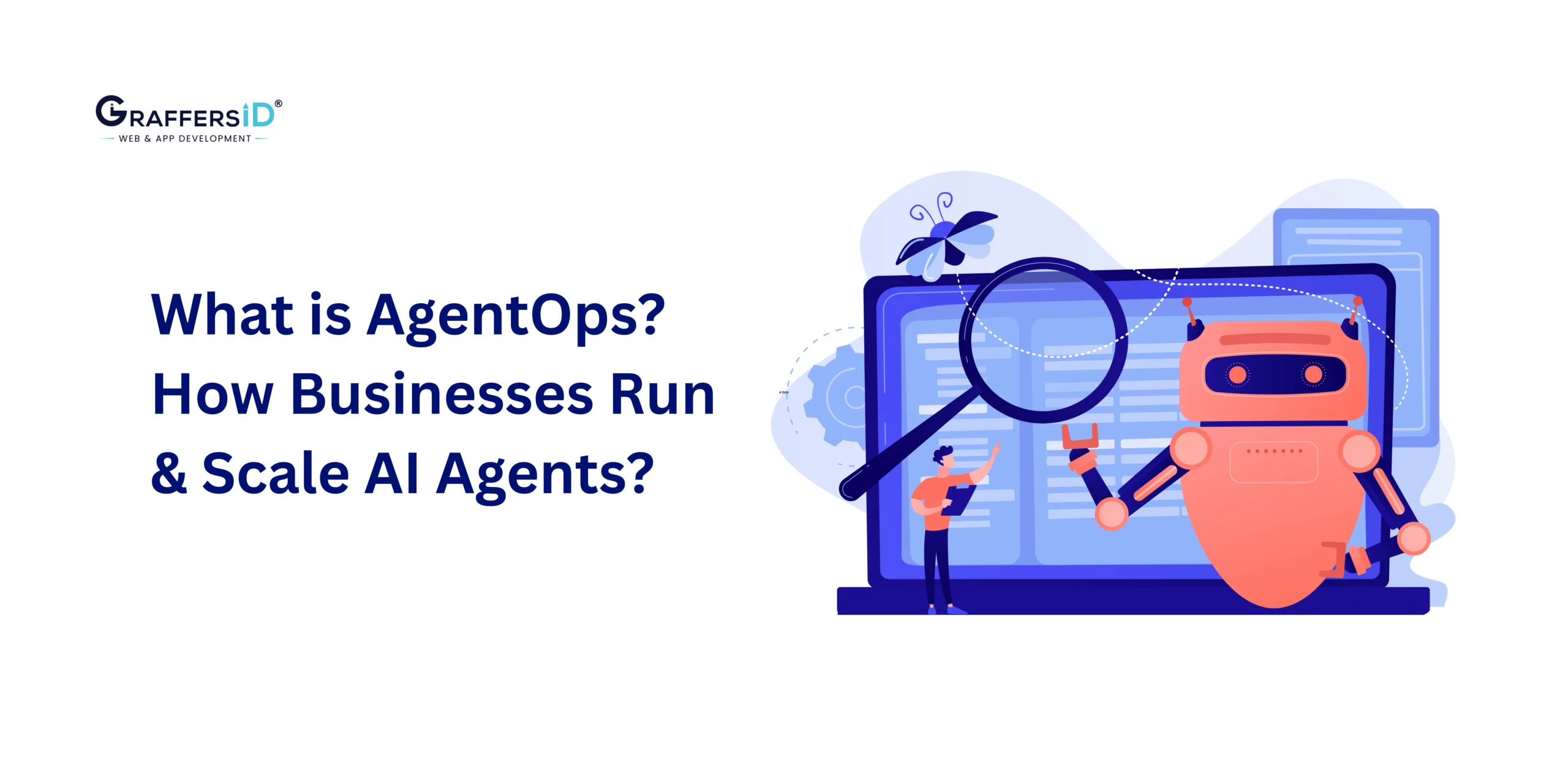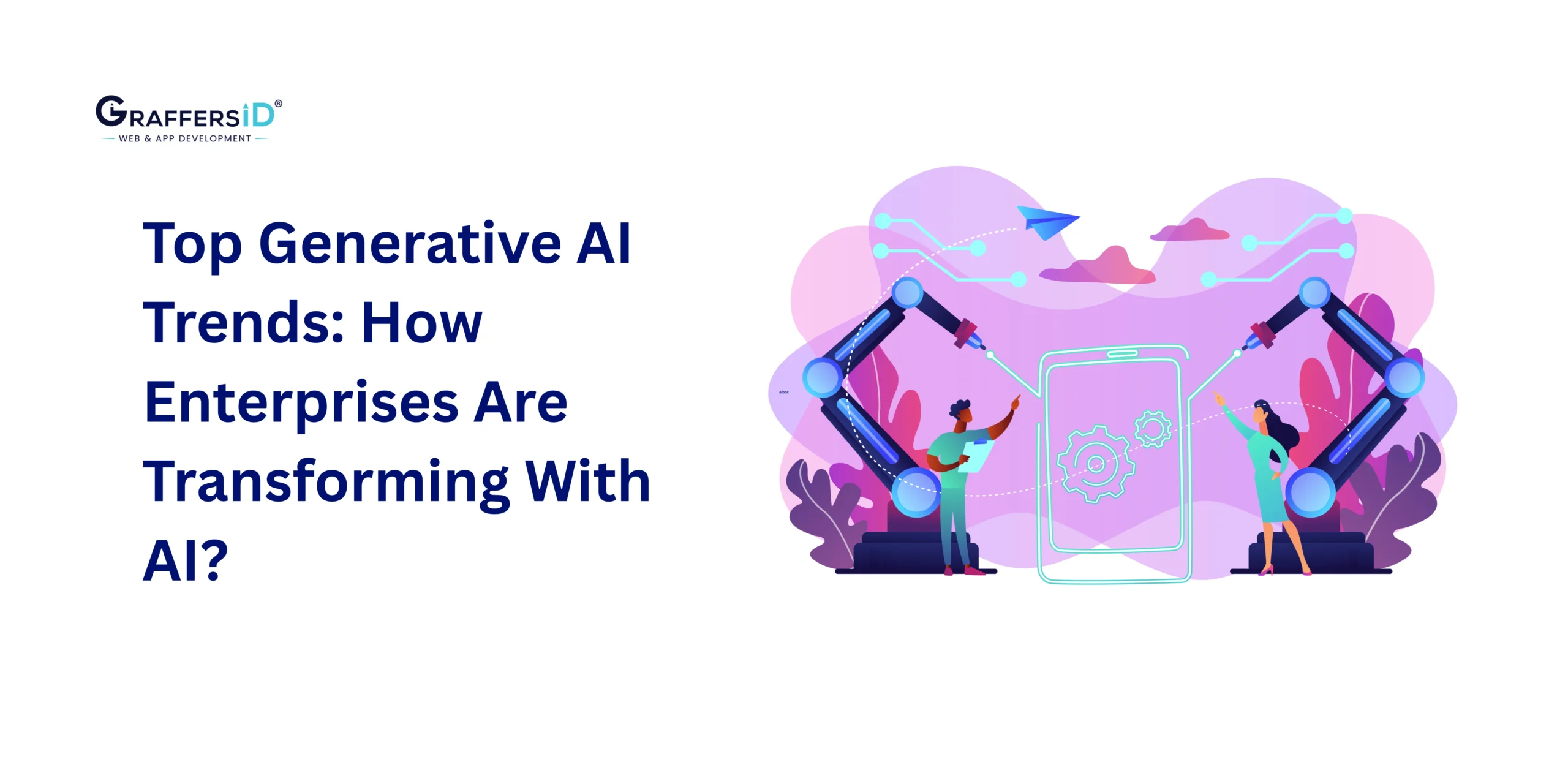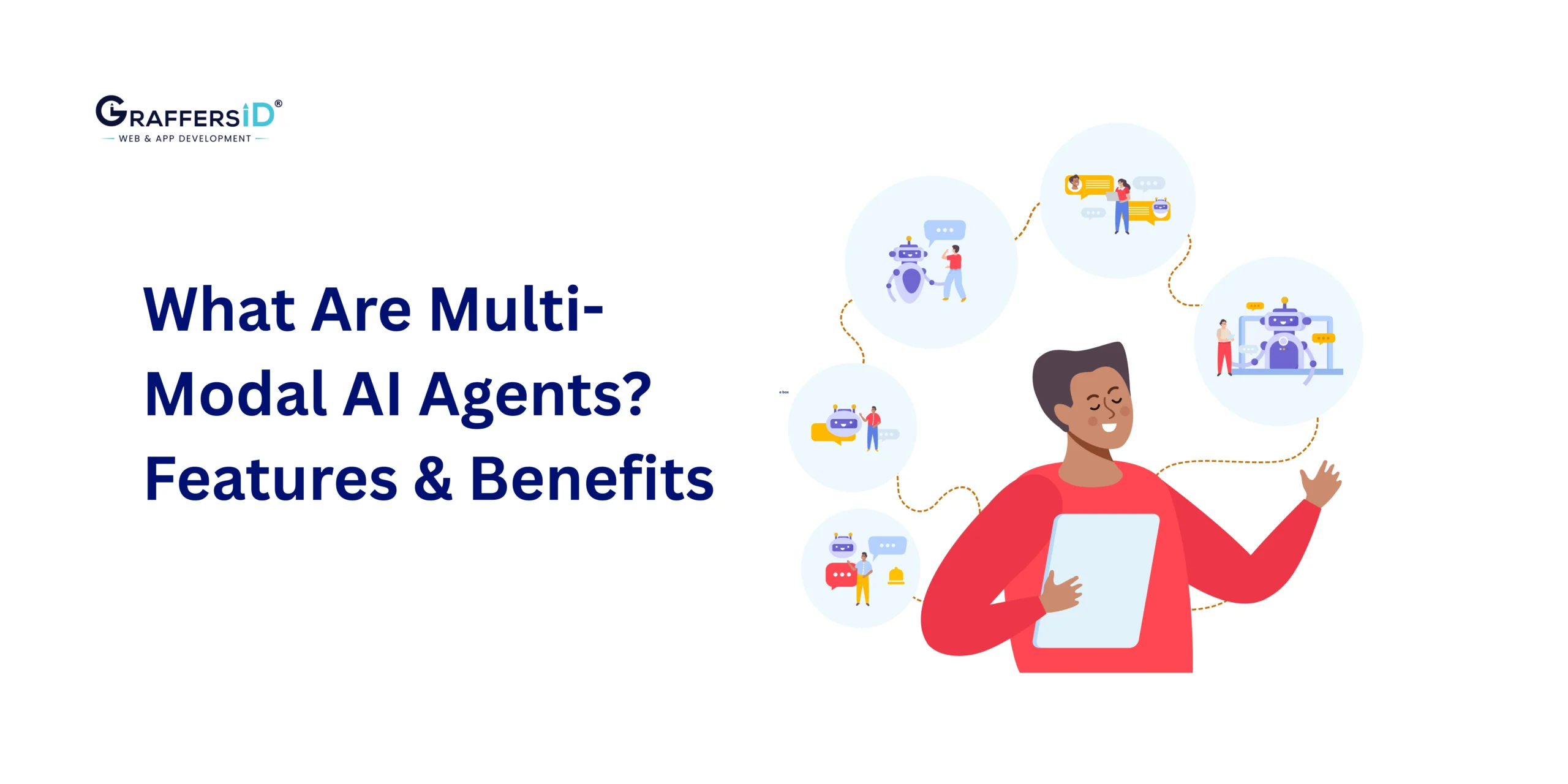TL;DR
AI copilots in 2026 are no longer just autocomplete, they act as agentic, policy-aware teammates that write, review, secure, test, and ship code. The biggest wins are reduced developer burnout, improved code quality, faster onboarding, and proactive DevOps, driven by agent workflows, security-by-default, and eval-based governance.
In 2026, AI copilots are far more than just code autocompletion. They are now agentic, policy-aware teammates that plan tasks, enforce security by default, and accelerate the entire software development lifecycle, from coding and testing to deployment and incident response. For developers, this means fewer repetitive tasks, faster onboarding, and higher-quality code. For businesses, it translates into reduced downtime, stronger governance, and measurable ROI.
With more than 85% of enterprises already using AI copilots in production and adoption growing across every industry, the real question isn’t whether to adopt them but how to choose, implement, and operationalize them effectively. The latest copilots integrate directly with IDEs, CI/CD pipelines, and observability stacks while respecting organizational privacy and compliance requirements.
This guide breaks down everything you need to know about AI copilots in 2026, what’s new, the hidden benefits beyond code completion, and a step-by-step roadmap to get value in just 90 days.
What’s New in AI Copilots in 2026? Latest Features Explained
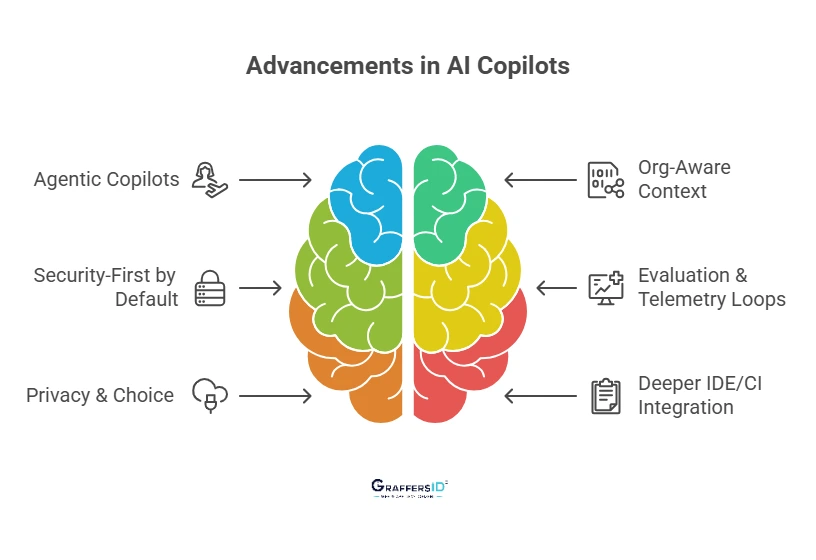
- Agentic copilots > code completion: Multi-step planning, tool use (terminals, issue trackers, CI), and self-checks before opening PRs.
- Org-aware context: Private code embeddings, code graphs, docs, runbooks, ADRs, and incident history inform suggestions.
- Security-first by default: Policy-as-code gates (e.g., secret scanning, SAST/DAST hints, IaC checks) applied at generation and PR time.
- Evaluation & telemetry loops: Teams run copilot evaluations (golden sets + live metrics) to track quality, regressions, and ROI.
- Privacy & choice: On-prem/air-gapped options, per-repo controls, retention toggles, and redaction for PII/secrets.
- Deeper IDE/CI integration: Task lists, test authoring, flaky test analysis, changelog creation, release notes, and infra drift fixes.
How Are AI Copilots More Than Just Coding Assistants in 2026?
Modern copilots interpret natural language tickets, plan steps, query code graphs, call tools (test runners, linters, and package managers), and propose safe changes with linked evidence. They are:
- Mentors for junior devs via inline explanations and examples.
- Scribes for docs, READMEs, ADRs, and architectural sketches.
- Reviewers who flag logic, performance, security, and style issues.
- Operators that summarize incidents, correlate logs, and propose remediations.
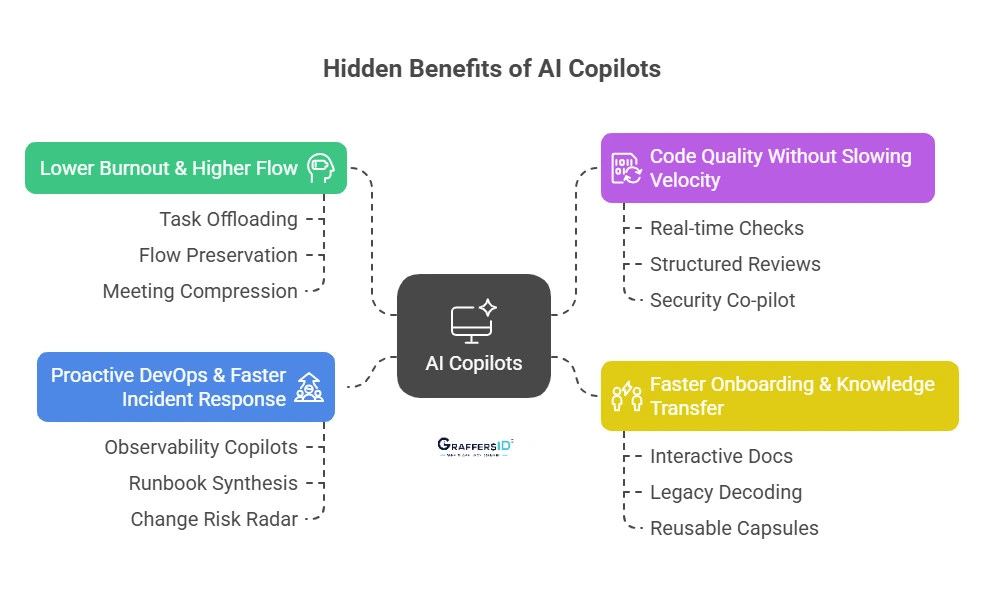
Hidden Benefit #1: Lower Burnout & Higher Flow
- Task offloading: tests, scaffolding, boilerplate, docs, changelogs, and release notes.
- Flow preservation: inline lookups and micro-explanations reduce context switching.
- Meeting compression: auto-summaries of standups, RFCs, PR threads, and incident channels.
What to operationalize
- Define a “no-hand” list (tasks the copilot should always draft first).
- Add editor commands: “Explain file,” “Generate tests,” “Create ADR,” and “Draft migration.”
- Track time-in-editor and handoffs avoided as burnout proxies.
Hidden Benefit #2: Code Quality Without Slowing Velocity
- Real-time lint and intent checks: detects inverted conditionals, null/edge cases, and perf footguns.
- Structured reviews: AI highlights risky diffs, proposes refactors, and adds missing tests.
- Security co-pilot: secret leakage prevention, dep risk notes, IaC, and container baseline checks.
What to operationalize
- Add copilot gates to PR templates (security checklist + “explain-the-change” section).
- Require unit tests or reasoning notes when AI authors code.
- Maintain a “do-not-suggest” policy (banned APIs, patterns).
Hidden Benefit #3: Faster Onboarding & Knowledge Transfer
- Interactive docs: “What does this service do?” “Show all rights to the Customer table.”
- Legacy decoding: traces code paths, explains conventions, and enumerates side effects.
- Reusable learning capsules: best-practice snippets and rationales are surfaced in context.
What to operationalize
- Build a code graph and an embeddings pipeline from main branches, ADRs, runbooks, and postmortems.
- Maintain role-based prompt packs (frontend, backend, SRE, and data) to guide high-quality requests.
- Track time-to-10th-PR and time-to-incident-fix for new hires.
Read More: Top 5 AI Coding Assistants in 2026 Every CTO Should Know About
Hidden Benefit #4: Proactive DevOps & Faster Incident Response
- Observability copilots: correlate spikes across logs/metrics/traces, propose RCAs, and draft mitigations.
- Runbook synthesis: turns recurring fixes into executable steps or automation.
- Change risk radar: flags risky deploys (coverage gaps, hot files, low review depth).
What to operationalize
- Route alerts → copilot thread that summarizes context, links PRs, recent deploys, and infra changes.
- Add the RCA templates that the copilot completes and posts to your knowledge base.
- Track MTTD/MTTR deltas and repeat incident rate.
How to Implement AI Copilots in 90 Days? (Step-by-Step Guide)
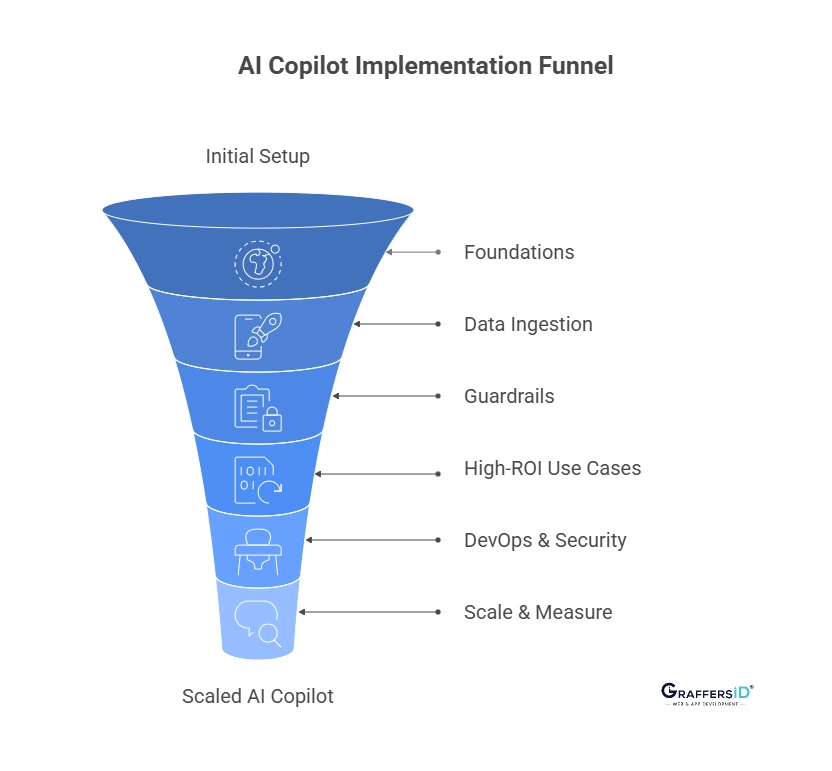
Weeks 1–2: Foundations
- Pick scope (2–3 repos, 1 service). Enable privacy settings and retention controls.
- Ingest repos, tickets, runbooks, ADRs, and postmortems into embeddings/code graphs.
- Define guardrails: secret redaction, policy-as-code, and license/dep rules.
Weeks 3–6: High-ROI Use Cases
- Autogenerate tests for hot paths; enforce “PRs must include AI test draft.”
- AI review suggestions on every PR; require a risk note on large diffs.
- Docs automation (README, API references, changelogs, release notes).
Weeks 7–10: DevOps & Security
- Connect logs/metrics/traces; enable incident summaries and RCA drafts.
- IaC and container hardening suggestions at PR time.
- Create golden eval sets (20–50 tasks) to baseline and track improvement.
Weeks 11–13: Scale & Measure
- Expand to adjacent services.
- Publish a copilot scorecard (velocity, quality, burnout, MTTR, onboarding).
- Tweak prompt packs and guardrails based on evaluations.
What Are the Key KPIs to Measure AI Copilot ROI in 2026?
- Velocity: PR cycle time ↓, coding-to-merge ratio ↑, queue wait ↓
- Quality: escaped defect rate ↓, coverage ↑, security findings at PR time ↑
- Reliability: MTTR ↓, repeat incidents ↓, change failure rate ↓
- People: time-to-onboard ↓, context switches ↓, dev NPS/satisfaction ↑
- Adoption: % PRs with AI suggestions, % commits with AI-authored tests
Read More: 7 Emerging AI Tools Every Tech Leader Should Know in 2026
How Do AI Copilots Handle Security, Compliance, and Governance in 2026?
- Data boundaries: training exclusion, on-prem/air-gapped options, and per-org retention.
- Attribution & traceability: label AI-authored lines/blocks; require commit reasoning.
- Bias & license controls: restrict non-permissive code patterns; include SBOM in CI.
- Evals & sign-off: treat Copilot changes like junior dev changes with an enforced review policy.
How to Choose the Right AI Copilot in 2026? (Decision Checklist)
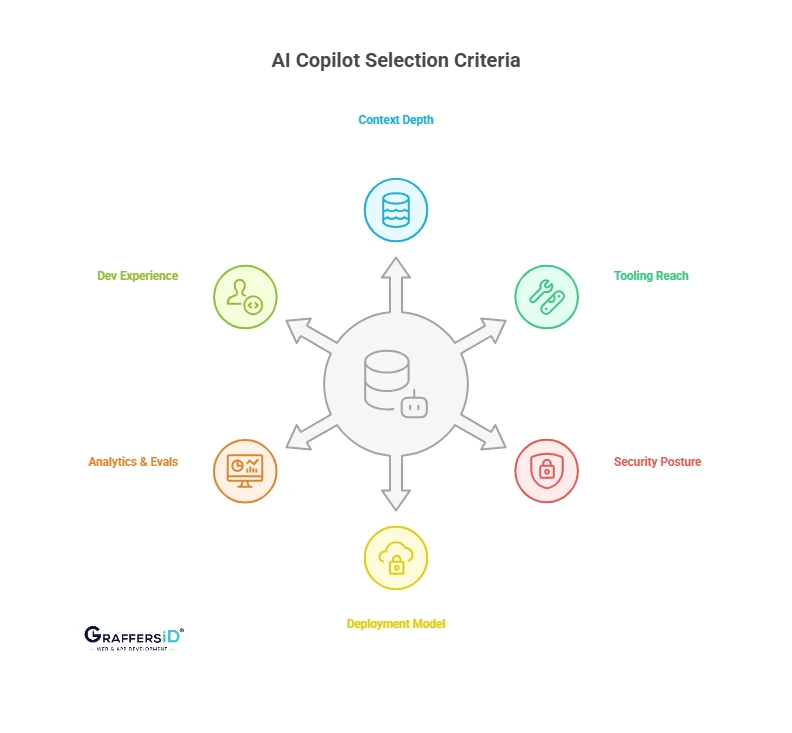
- Context depth: supports large codebases, multi-repo graphs, and cross-file reasoning.
- Tooling reach: tests, linters, package managers, build, CI, observability, and ticketing.
- Security posture: secret hygiene, SAST/DAST hints, IaC checks, and policy gates.
- Deployment model: SaaS vs. private/cloud/on-prem; latency, SLA, updates.
- Analytics & evals: built-in dashboards, per-team metrics, and regression alerts.
- Dev experience: frictionless IDE integration, great diffs, and explainer quality.
Conclusion
AI copilots in 2026 are no longer just tools for writing code; they act like smart teammates that help developers work faster, reduce errors, and keep projects secure. They save time, lower costs, and make it easier for teams to stay focused and productive.
For businesses, using AI copilots is now a competitive necessity. Companies that adopt them see better code quality, faster releases, and happier developers. The key is not just adding an AI copilot but setting it up with the right context, rules, and goals so it truly fits your team.
At GraffersID, we help startups and enterprises build smarter, faster, and more scalable solutions using AI copilots and custom AI assistants. From development support to full AI integration, our experts ensure you stay ahead of the curve.
Hire AI developers from GraffersID today and turn your ideas into intelligent products.
